Are you in the market for a new axe handle? You've come to the right place! Choosing an ax handle can be tricky; not all handles are created equal and what works best depends on your purpose. Whether you're looking for an axe that is tough enough to break up logs or just something durable enough to cut through tree branches, I'll help you find the perfect handle for your needs. Keep reading to discover which type of material will give you the most reliable grip and why certain styles are better suited for different tasks. Let's get started!

Ash and hickory are popular woods for axe handles due to their strength, durability, and flexibility. Ash is considered the more forgiving of the two kinds of wood, making it a better choice for beginners. Hickory wood is harder to work with but provides greater shock absorption, which makes it a great choice for professional or experienced users who need an axe handle that can take a lot of abuse without breaking. It's important to note that both types of wood should be regularly treated with oil or varnish to maintain their structural integrity over time. Ultimately, deciding which type of wood is best for your axe handle depends on personal preference and what will work best for your intended purpose. Whichever you choose, make sure to take proper care of your axe handle, providing you with reliable service for a long time.
How to choose the best axe handles?
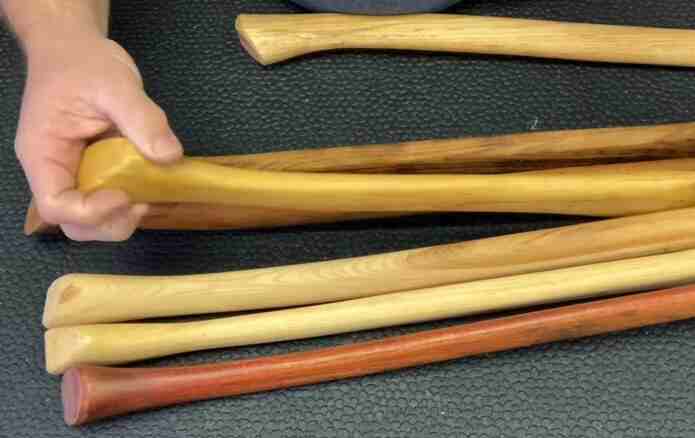
The handle of an axe plays a crucial role in determining the effectiveness, comfort, and safety of your wood-cutting endeavors. A well-chosen axe handle can enhance your control, reduce fatigue, and ensure that your tool lasts for years. This buying guide will provide you with six essential tips to consider when selecting the best axe handle for your needs.
Material and Durability:
Axe handles are commonly made from various materials, including wood, fiberglass, and composite materials. Wooden handles are traditional and offer a natural feel, but they require more maintenance. Hickory and ash are popular choices due to their durability and shock-absorbing qualities. Fiberglass and composite handles are known for their strength and resistance to weather conditions. Choose a handle material based on your preferences, the type of work you'll be doing, and the climate you'll be working in.
Handle Length:
The length of an axe handle affects its balance and the force it generates. Longer handles provide greater leverage and chopping power but can be more challenging to control. Shorter handles offer increased maneuverability but may require more effort for powerful swings. Consider the type of tasks you'll be performing. For heavy-duty chopping, a longer handle might be preferable, while a shorter handle is better suited for tasks that demand precision and control.
Handle Shape and Profile:
The shape and profile of the handle play a significant role in comfort and control. Most axe handles have a slight taper from the head end to the grip end, which helps with grip and control. Some handles also feature ergonomic shapes to reduce strain on your hands during prolonged use. Test different handle shapes to find one that feels comfortable and provides a secure grip.
Grip and Texture:
A secure grip is essential for safety and efficiency. Look for handles with proper texturing or grip patterns to prevent slipping during wet or sweaty conditions. Some handles have rubberized or textured coatings to enhance grip. Additionally, check the diameter of the grip; it should feel comfortable in your hand without being too thin or too thick.
Vibration Dampening:
Chopping with an axe generates vibrations that can lead to discomfort and fatigue over time. Some modern axe handles incorporate vibration-dampening technologies to reduce the impact on your hands and arms. This feature is especially useful if you plan to use the axe for extended periods. Keep an eye out for handles with shock-absorbing materials or design features.
Brand Reputation and Reviews:
When selecting an axe handle, consider reputable brands known for producing high-quality tools. Research customer reviews and testimonials to gain insights into the performance, durability, and user experiences of specific axe handles. Positive feedback and long-standing reputation can indicate that you're making a wise choice.
By following these six tips, you'll be well-equipped to select an axe handle that meets your needs and allows you to tackle your wood-cutting tasks with efficiency and confidence.
Best rated axe handles: An overview
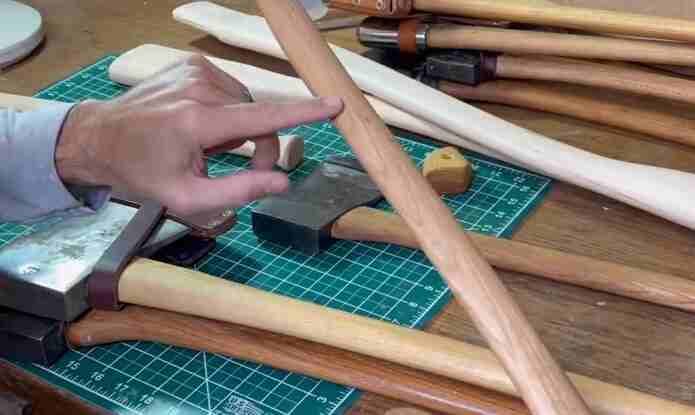
Axe handles have been a staple of woodworking and carpentry for centuries. As such, there are no one-size-fits all solution when it comes to axe handles. Different materials, shapes, and sizes are needed for different tasks. With so many options on the market today, choosing the right axe handle can be challenging. That's why I've compiled this list of the best rated axe handles. With various sizes and shapes to choose from, you can find the perfect handle for your needs. So go ahead and look at my list of the best rated axe handles and find the one that's right for you!
1. Husqvarna HUSQ 26" Replacement Axe handle
Husqvarna HUSQ Axe handle is an incredibly durable and dependable choice for all of your axe-related needs. Made out of solid Swedish steel, this handle boasts a comfortable grip, making it easier to work in any environment and giving you maximum control over even the most vigorous jobs. As part of the Husqvarna Lifetime Warranty, you can rest assured that this handle will remain firmly in place for extended periods due to its sturdy steel construction. With the Husqvarna HUSQ 26" Replacement Handle, you can be sure that your axe will be up to any task and still look great!
2. True Temper 2020900 Replacement Axe Hardwood Handle
True Temper 2020900 Replacement Axe Hardwood Handle is perfect for replacing tired or worn-out axe components. Measuring 28 inches, the durable hardwood handle ensures quality and performance with every use. The easy-to-install design allows for quick repair and replacement, meaning you can get back to tackling tough cutting jobs in no time! When building quality, trust the True Temper brand to deliver the best results at a great price.
3. Seymour 140-19 36-Inch Double Bit Axe Handle
Whether you're a professional logger, trail maintenance worker, or homeowner, the Seymour 140-19 36-Inch Double Bit Axe Handle is an essential tool for your arsenal. Made from durable hickory material with poly coating to protect against decay and rust, this Axe Handle can stand up to even the toughest working conditions. Featuring one round eye and one straight eye, it provides balance and strength for two-handed maneuverability. Easy to replace in your old axe head, you'll surely get years of dependable service from this heavy-duty handle. Make sure to pick up your Seymour 140-19 Double Bit Axe Handle today!
4. Truper Axe Handle
Truper Axe Handle is an ideal choice for a reliable and hard-wearing handle. Constructed of sturdy hickory wood, this lightweight handle measures 36" long and 5" wide, making it great for use with various axe heads. The light brown color will coordinate with most home décor while providing a secure grip and controlled throwing motion. Enjoy the comfort, ease of use, and years of dependable performance from the Truper Axe Handle.
What is an axe handle?
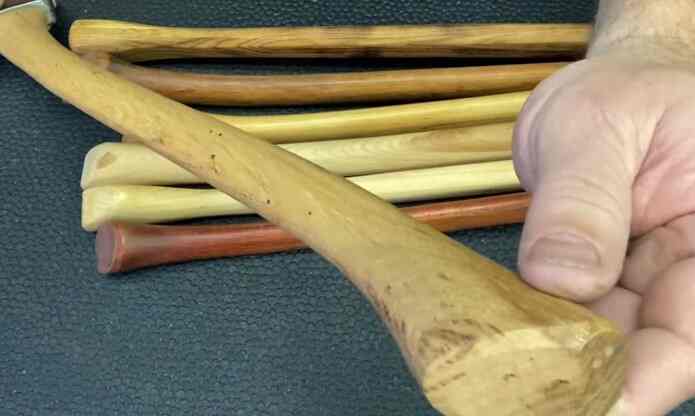
An axe handle is a wooden or synthetic handle attached to an axe head. It gives the user a grip and allows them to swing the axe. The axe handle may be straight or curved and may have a lanyard hole for attaching a cord.
Axe handles are typically made from hickory, ash, or maple wood. They are also sometimes made from synthetic materials such as fiberglass or plastic. Axe handles must be sturdy and tough enough to withstand the force of being swung. They also need to be resistant to moisture and rot.
How does an axe handle work?
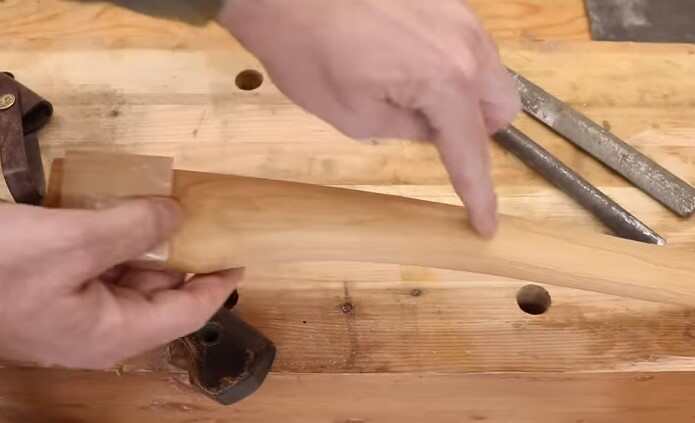
Have you ever wondered how an axe handle works? Axe handles are designed to balance strength and flexibility, allowing them to absorb much shock when swinging at the wood. They come in various shapes and sizes, but all have one essential purpose: to connect your hands with the blade.
Here, I'll explore the anatomy of an axe handle and learn how it functions to make your job easier.
The primary components of an axe handle include a neck, shoulder, grip, and bit. The neck is located at the top part of the handle and connects it to the blade. It fits snugly into the eye of the headstock so that it won't move or slip. The shoulder runs from the neck down to the top part of the handle, providing support and absorbing shock when chopping.
The grip is located at the lower section of the handle and provides a secure hold for maneuverability and comfort. This can come in different shapes depending on the type of axe but usually consists of a handle guard, collar, and palm swell. The bit is the bottommost section that holds the axehead to the handle.
The design of an axe handle is unique in that it combines strength and flexibility in one component. Its curved shape helps absorb shock, so your hands don't take all the force when swinging at the wood. The handle is also designed to deflect away from the blade if it ever slips, reducing the risk of an accident.
Regarding maintenance, axe handles can last long with proper care and storage. Ensure your axe is stored dry and the headstock is covered. Also, clean the handle after each use and keep it oiled to prevent cracking.
Now that you know how axe handles work, you'll be able to use yours more efficiently and safely. Enjoy the satisfaction of chopping wood, knowing your axe handle can take it!
What is the best length for an axe handle?

It depends on the weight of the axe and your strength. A heavier axe will require a longer handle to achieve the same level of power as a lighter axe. If you are relatively strong, you can use a shorter handle because you can generate more power with each swing. If you are weaker, you will need a longer handle to achieve the same power level.
How do you fix a broken axe handle?
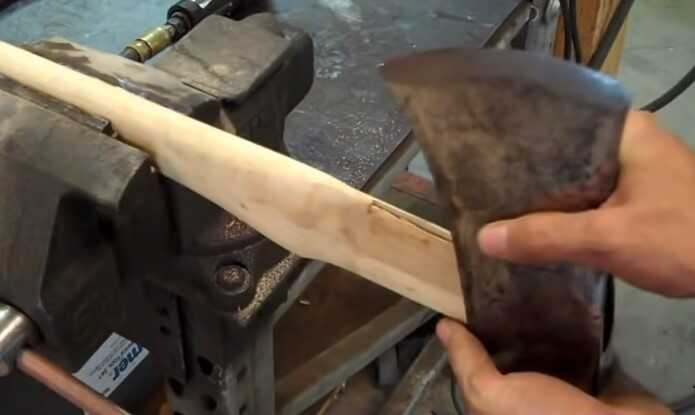
Fixing a broken axe handle can be intimidating, but it doesn't have to be. With the right tools, a little know-how, and patience, you can easily repair your axe handle in no time.
To get started, gather the following supplies: an appropriate replacement handle for your axe (wooden or fiberglass, depending on what type of axe you have); a hammer; wood glue; a saw; sandpaper; and a few clamps.
The first step is to remove the old handle from the axe head. Start by tapping it with the hammer to loosen it, and then you can carefully pull it away or use the saw to cut off any remaining pieces of wood. Once you have removed the old handle, clean off the axe head to prepare it for the new handle.
Next, insert the new handle into the axe head. If it doesn't fit snugly, use sandpaper to adjust the shape and size until it fits tightly. Once this is done, you can begin gluing the two pieces together. Apply a generous amount of wood glue along both sides of the handle and press it firmly into place. Ensure you wipe off any excess glue with a damp rag as it dries quickly.
Once the glue is dry, you can start shaping the new handle. To do this, clamp the axe securely to a workbench or other solid surface and use a saw or sandpaper to cut and shape the handle until you're satisfied with its appearance.
Finally, finish your work by applying a coat of clear varnish or paint to protect the handle from dirt and water damage. You can also use linseed oil for added protection - just apply it liberally and let it dry completely before putting your axe back into service.
And there you have it! With patience and a few easy steps, you now know how to fix a broken axe and handle yourself. Whether you need an emergency repair or are simply sprucing up an old axe, this guide will help you get the job done quickly and safely.
How to replace an axe handle?
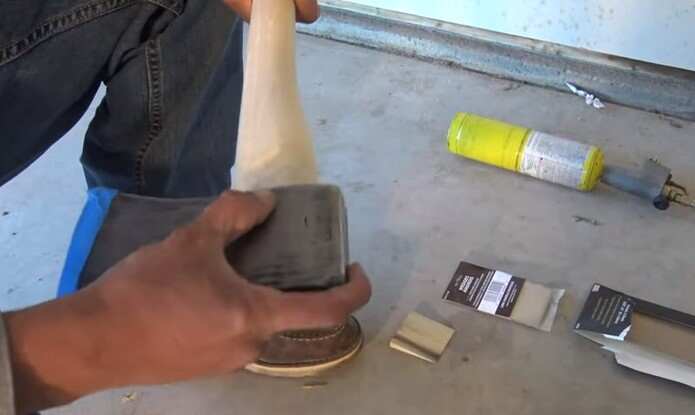
If you have an old axe with a broken handle, it may seem daunting to replace the handle. But replacing an axe handle is easier than you might think and can be done in no time with the right materials.
Here is a step-by-step guide to replacing an axe handle:
- Gather the essential materials. You will need an axe handle, a wedge, a hammer, and linseed oil. The size of the axe handle should match the old one, so you may have to measure it before purchasing it.
- Remove the broken handle from the axe head. To do this, place the head of the axe in a vice attached to a workbench or use rubber bands tied around a tree to secure it in place. Then take a wedge and insert it between the eye of the axe (the opening where the handle sits) and drive it down with your hammer until you can remove what's left of the broken handle.
- Prep the new handle. Make sure to use sandpaper to smooth out any rough edges and apply linseed oil to soak into the wood fibers keeping it strong and rot-resistant.
- Insert the new handle into the eye of the axe head and tap it down with your hammer until it is snugly in place, but not too tight, as this can crack or otherwise damage your axe handle.
- Secure it with a wedge. When you are satisfied that the handle fits properly, use a wedge (or wedges, depending on what size and shape your axe head is) and drive them tightly onto either side of the axe head so that they hold the new handle in place.
- Finish with linseed oil. Once everything is in place, apply another coat of linseed oil to the handle and let it soak overnight so that the wood fibers stay strong and rot-resistant.
And there you have it - your axe handle has been replaced!
By following this guide, you are equipped with the knowledge of how to replace an axe handle correctly and safely, allowing you to get back to work quickly and efficiently.
What are the different types of wood that can be used for axe handles?
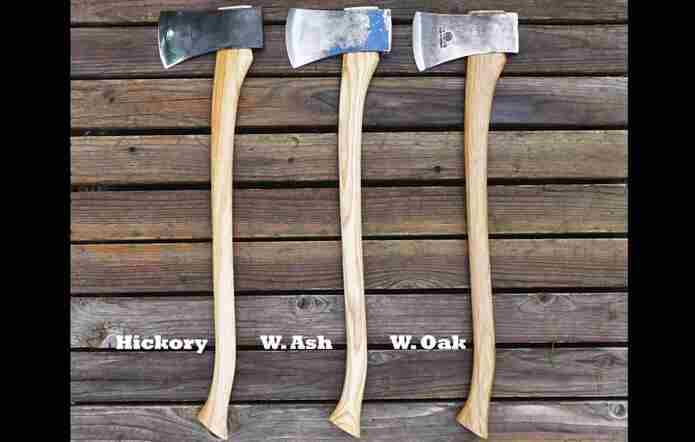
Axe handles are a critical component of any axe, ensuring safety and comfort while using the tool. Choosing the right material for your handle is important, as this will affect its strength and durability. So what are the different types of wood that can be used for axe handles?
Hardwoods are generally the best choice when it comes to axe handles. Due to their strength, weight, and shock-resistance properties, oak, hickory, ash, and maple are all commonly used woods. Hardwood handles also have good gripping surfaces, so you don't lose your grasp while chopping down trees or splitting logs.
Softwoods like pine and cedar may also be viable options for axe handles if treated properly with the right wood preservative. While they may not be as strong as hardwoods, they're often cheaper and can still get the job done if you treat them well.
Synthetic materials, such as fiberglass or plastic composites, are also used to make axe handles. These materials offer improved strength, flexibility, and durability compared to wooden handles, but some folks argue that they don't have the same tactile feel that natural woods give.
Ultimately it comes down to personal preference when choosing an axe handle material. Some people prefer the familiarity of wooden handles, while others opt for the convenience and longevity of synthetic options. Whatever you choose, make sure it is strong enough to handle tough tasks without breaking or cracking.
Final Words
In conclusion, the best axe handle is the one that meets your needs and preferences. Whether you're looking for a durable steel axe handle or a more traditional wooden one, plenty of options are available. With a little bit of research, you should be able to find the perfect axe handle for your next project. Thanks for reading!